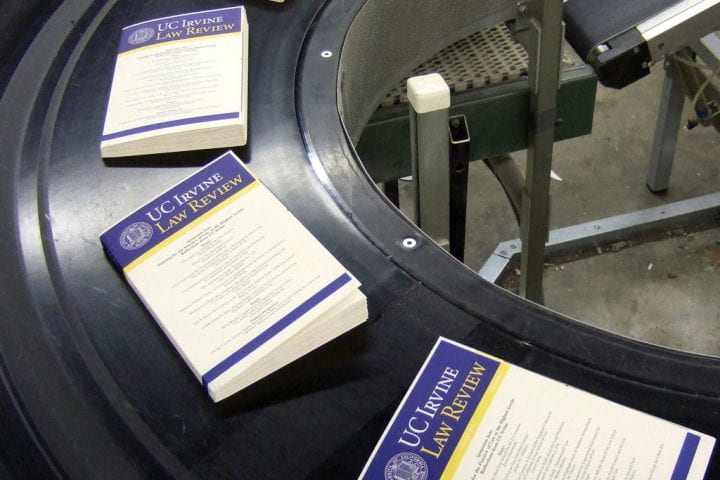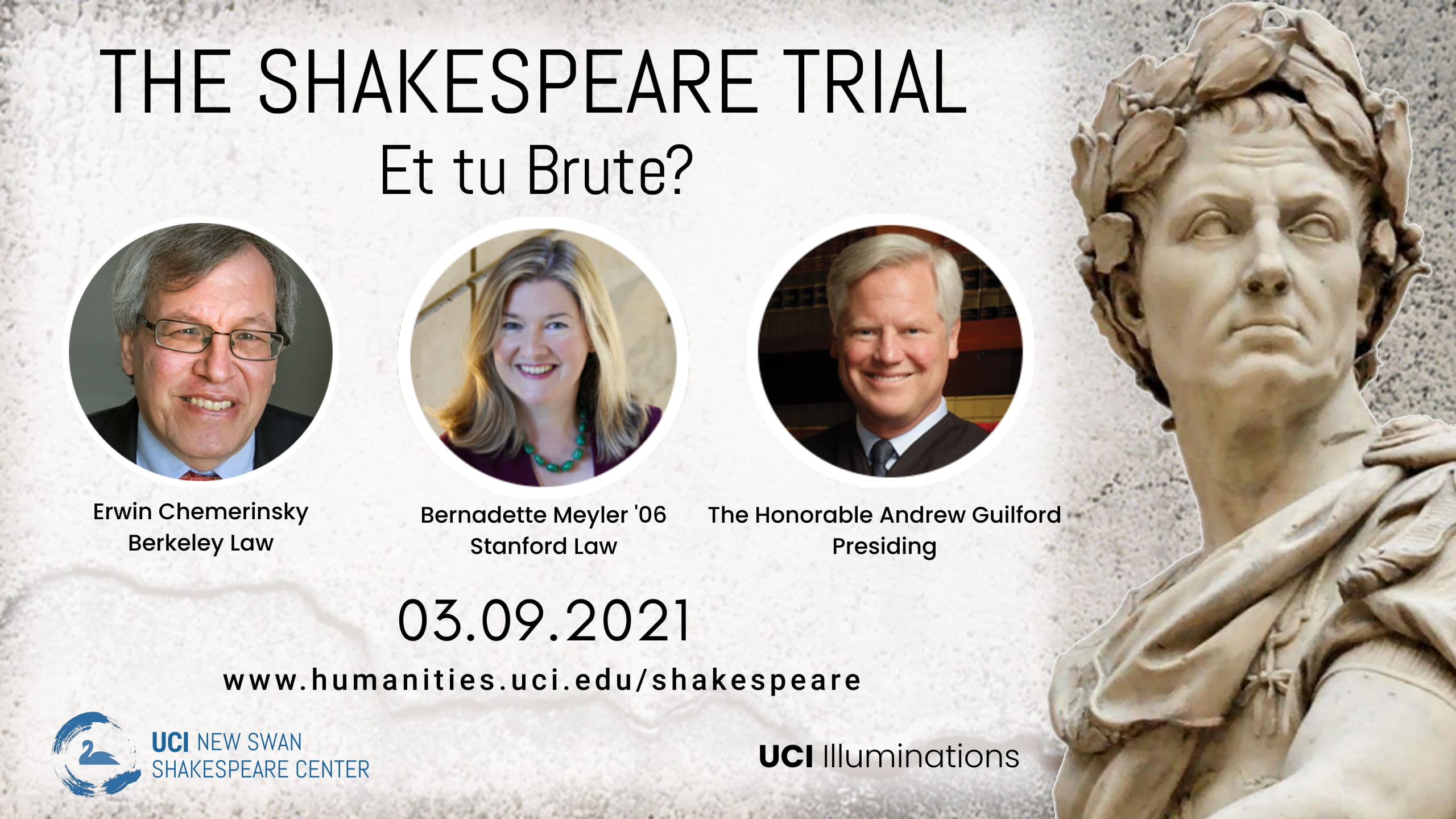Inaugural law review is hot off the press
Compendium of scholarly articles focuses on innovation in legal education.

From Day One, the founding philosophy of the UC Irvine School of Law was that it be traditional enough to be credible but innovative enough to justify its existence.
Students involved in the school’s inaugural UC Irvine Law Review took that mantra to heart, employing an egalitarian model that abandoned prestigious titles in favor of putting every able body to work.
“The reason,” says Catherine Fisk, Chancellor’s Professor of law and the law review adviser, “is that there is so much to be done in getting a law review started and the UC Irvine Law Review is publishing so many articles in its first years of operation, the students decided they needed as many people as were willing to assume leadership positions.”
Law is unusual, and perhaps unique, in that the scholarly journals in
the field are student-edited and student-run. Professors submit
articles – just as history professors submit work to history journals –
and the students decide which to publish. Every law school produces at
least one review.
For the first few years of its existence, the UC Irvine Law Review
will publish articles on themes selected by faculty. So while students
did not select content for this issue, they did manage the rest of the
process, including editing, printing contracts and library
subscriptions. Three more issues are planned this year.
The premiere issue, which rolled off the press in March and is on its
way to law school deans and libraries and federal judges across the
country, focuses on innovation in legal education. Dean Erwin
Chemerinsky’s opening article, for example, is about cutting-edge
curricula that – in addition to teaching writing and legal concepts –
cover the nuts and bolts of practicing law. Components include mandatory
live-client clinics, negotiation skills, training in ethics, economics
and social skills that go into running a practices, and integrating
interdisciplinary perspectives into first-year studies.
“I think that the most important development since I was in law
school in the mid-1970s has been the realization that law is inherently
interdisciplinary; it is informed by disciplines such as economics,
psychology, sociology and anthropology, and these disciplines in turn
study law and offer tools for understanding it,” Chemerinsky writes.
“In this sense, I applaud the increase in the number of law faculty
with degrees in other disciplines and the great rise in the
interdisciplinary scholarship. At the same time, I realize that law
schools exist preeminently for training students to be lawyers, and a
faculty must be a big tent with room for faculty deeply engaged in the
practice of law and for faculty who have never practiced law at all.”
Other essays by faculty members Jennifer M. Chacón, Ann Southworth
and Fisk, and Carrie Menkel-Meadow discuss the innovative classroom
experience at UCI. Chacón, for example, looks at the challenges of
skills-oriented learning in a in a traditionally doctrinal subject such
as criminal law and how she adapted her teaching methods. The issue
concludes with a piece by Denisha McKenzie and David Rodwin, telling the
UCI story from a student perspective.
“It was a lot of work; even the minor decisions were contested,” says
second-year student Emmanuelle Soichet, a member of the UC Irvine Law
Review’s six-person executive board. “But it was definitely rewarding.
Part of my interest in attending a new law school was that we would be
‘institution building’ as we were learning. I couldn’t imagine having
this experience at any other law review.”
Fisk praises the students who – like law students everywhere –
arrived knowing little about the purposes and processes of law reviews
but who – unlike other law students – started one from scratch.
“In the space of a few months, they had gotten it organized,” she
says. “They did research among other law review editors to teach
themselves what’s involved. They trained themselves how to edit. They
designed the look of the law review. And they did it all through a
consensus decision-making process.”

